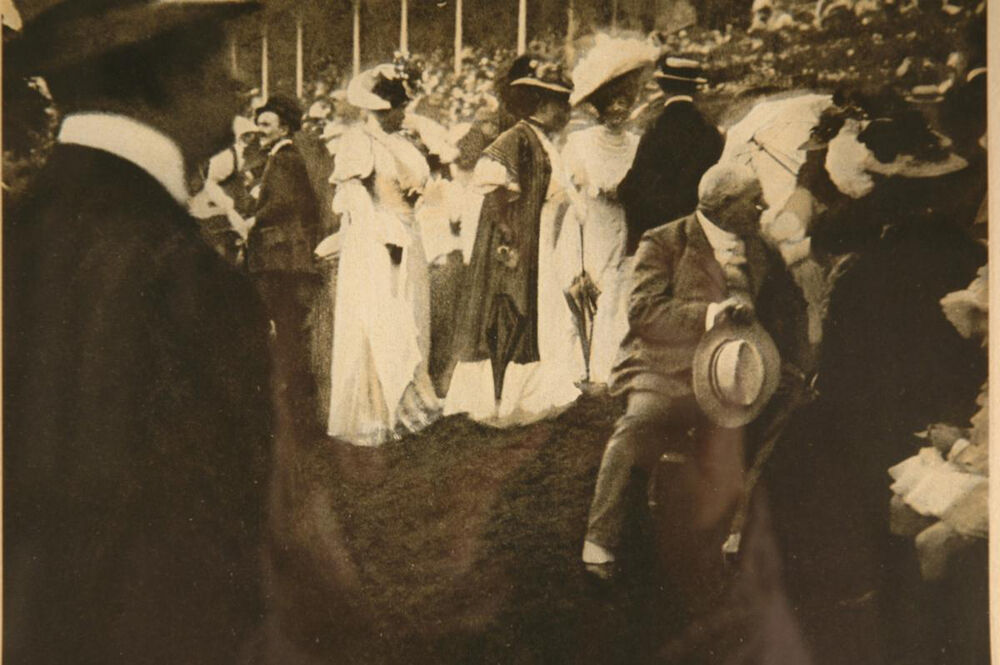
Steeple chase day, Paris Grandstand, 1907
Edward J. Steichen
1879 - 1973
Photogravure. 15.7 x 19.8 cm.
© Edward J Steichen/ BONO
Om fotografen
Following the First World War, Steichen moved away from his previously pictorialist style and began to experiment with various techniques. He adopted a modernist style, incorporating elements of abstraction and a highly defined clarity within his images. These early experimentations helped to redefine and strengthen the appeal of photography.
Throughout the 1920s and 1930s Steichen worked as a fashion photographer for American Vogue and Vanity Fair. His soft-focus portraits of celebrities including, Gloria Swanson and Clara Bow, captured a romanticised vision of Hollywood; a mode still used today. Described by Vanity Fair’s editor Frank Crowninshield as one of the ‘world’s greatest living portrait photographers’, Steichen became the world’s highest paid lens-based artist.
Many historians date the beginnings of modernism in photography to the Photo-Secession, a group of American photographers founded by Alfred Stieglitz in 1902. Members included Edward Steichen, Alvin Langdon Coburn, Gertrude Käsebier and Clarence H. White, who all placed great importance on fine photographic printing and used techniques which mirrored paint and pastel. Their main ambition was to position photography as more than a popular pastime or commercial pursuit, and rather as a fine art. The results were exhibited in their New York gallery, The Little Galleries of the Photo-Secession, later known simply as 291.
Edward J. Steichen